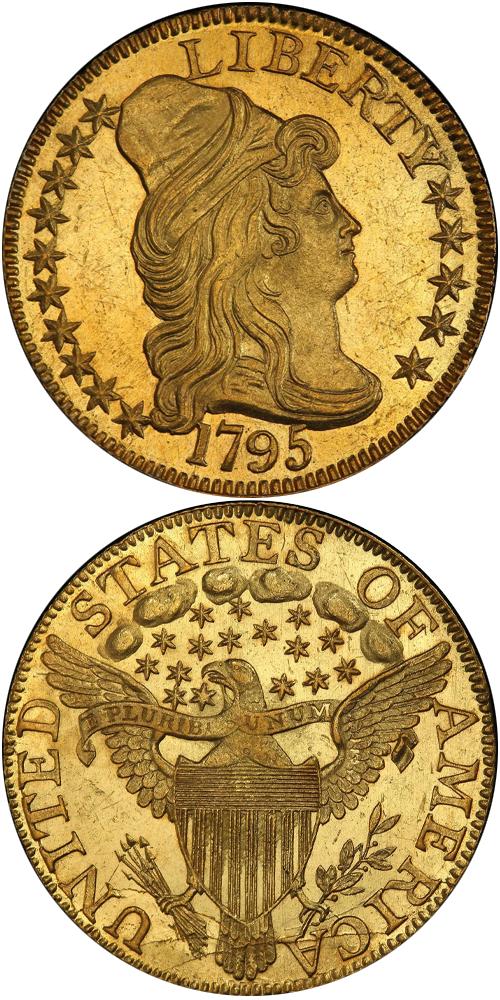1795 Capped Bust Right Half Eagle
A numismatic exclave, disconnected from the 1795 Small Eagle half eagles by time and design, this variety was coined in either 1797 or 1798. Belying the date on the die, this obverse, along with two other 1795-dated obverses, was put back into use after the Heraldic Eagle reverse type debuted in 1797. While these distinctions are meaningful to collectors today, they likely meant little to the coiners then. With depositors expecting their gold quickly returned in the form of new United States coins, and government oversight encouraging efficiency and cost control, using a serviceable but out-of-date die was evidently preferable to creating a new die.
Though very rare as a major variety, three different die marriages of the 1795 Large Eagle or Heraldic Eagle half eagles exist. The BD-15 die marriage is the most plentiful of them, though the Dannreuther-Bass book estimates that just 30 to 35 examples are known. The other two 1795 Large Eagle varieties share a reverse and both are extremely rare. BD-13 is known by just a single surviving specimen, while BD-14 has a population estimated at just 14 to 18 coins. The D. Brent Pogue coin is undoubtedly the finest known of this variety, finer than the specimen retained in the Bass Collection. The only other PCGS MS-64 of the 1795 Large Eagle type is the James A. Stack coin, struck from the more elusive BD-14 die marriage. It last sold in our January 2003 Rarities Sale, the only auction appearance of a PCGS-graded example certified finer than MS-62.
The example to the left was sold by Stack's Bowers Galleries in the D. Brent Pogue Part II Auction, where it realized $282,000.






